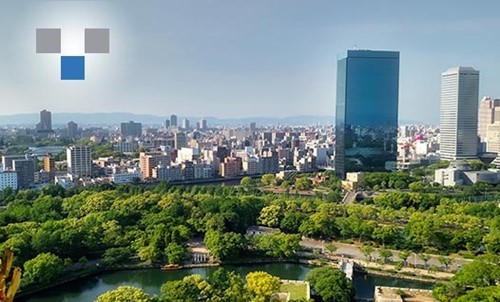Osaka vs Tokyo - What are the differences?

Tokyo and Osaka are two cities in Japan that are often compared. Tokyo is the capital of Japan and part of Kanto region, while Osaka is the largest city of Kansai region. However, the differences are not limited to geography, and include dialects, food tastes, the side people stand on the escalator, and even the size of the tatami mats. Both of these cities can offer a lot to foreign residents living in Japan making it worth exploring the differences between them.
We have many articles that will help you make the most out of your life in Tokyo covering international supermarkets, Japanese language schools, top 10 places to shop in Shibuya, English-speaking gyms, best stores for buying souvenirs, and more. We also have articles with useful information for foreigners living in Osaka covering English-speaking hospitals, dentists, as well as attractions and advantages of living there.
Dialects

People in Osaka are able to speak standard Japanese however, they speak to each other in Osaka dialect in daily life. Understanding some Osaka dialects will help you feel closer and get to know each other faster. Below are some differences between standard Japanese and Osaka dialect.
Blue = Standard Japanese (Tokyo)
Red = Osaka dialect
Thank you.
Arigato(ありがとう)
Okini (おおきに)
How much?
Ikura?(いくら?)
Nanbo?(なんぼ?)
Really?
Honto?(ほんと?)
Honmani?(ほんまに?)
Very
Totemo(とても)
Meccha(めっちゃ)
It cannot be helped.
Shikatanai(しかたない)
Shaa-nai(しゃあない)
No good.
Dame(だめ)
Akan(あかん)
Wrong
Chigau(ちがう)
Chau(ちゃう)
Which of them likes to talk a lot?

It depends on the person of course however, it is said that people in Osaka are more talkative than people in Tokyo. People from Tokyo are quiet on the train, whereas people from Osaka chat a lot on the train. You may be able to see the difference when you take a local train in Tokyo and Osaka.
Escalator Etiquette: Which side do you stand on?
Tokyo

Stand to the left and leave the right side open.
In Tokyo and other cities in the Kanto region, people tend to stand on the left side of the escalator, leaving the right side open for people in a hurry. In Kyoto, people stand on the left side, probably because of the large number of tourists.
Osaka

Stand to the right and leave the left side open.
In Osaka, Hyogo, Nara and Wakayama, people stand on the right side of the escalator and people walk on the left side.
However in recent years, people throughout Japan have been encouraged to stand on escalators and not walk. To learn more about train etiquette in Japan, please check this article.
Electricity Frequencies

Image from TEPCO
Bordered by the Itoigawa River in Niigata Prefecture and the Fuji River in Shizuoka Prefecture, the frequency of electricity is 50 Hz in the east and 60 Hz in the west. This is due to the introduction of German and American styles in the east and west.
Tokyo:50Hz
Osaka:60Hz
Some many years ago, appliances could not be used with different voltages and had to be replaced when moving across the East and West, but this is not a particular problem today as many products can be used with both frequencies.
> Japan Voltage, Frequency, and Plug Type: Guide to Plugging In
> Household Electronic Appliances in Japan - For Long-term Residents
Tatami Size

The size of tatami differs between Kyoma (Kansai) and Edoma (Kanto).
Edoma is one size smaller. This is because in the Kinki region in the past, the building system used pillars based on the size of the tatami mats, whereas in the Kanto region during the Edo period, the building system matched the size of the tatami mats to the spacing between the pillars.
Size of a Tatami mat
Tokyo:176cm x 87.8cm
Osaka:191cm x 95.5cm
> A Guide to Tatami and Tatami Mats
Another Intriguing Tale

The reactions to a friend wearing new clothes are also different in Tokyo and Osaka.
In Tokyo, people would ask:
Where did you buy it?
In Osaka, people would ask:
How much did you pay for it?
People from Tokyo are interested in the shops where they can buy fashionable clothes, while people from Osaka are interested in how much they paid for them.
It might be interesting to learn about the various cultures and characteristics of different regions within the same country Japan.
Differences in Flavor

Osaka and Tokyo have different food preferences. Read this article to learn more about the taste difference.
Moving to Osaka?

If you would like to know more about the culture and attractions of Osaka, please refer to "Attractions and Advantages of Living in Osaka".
















